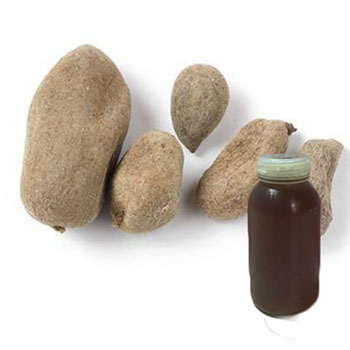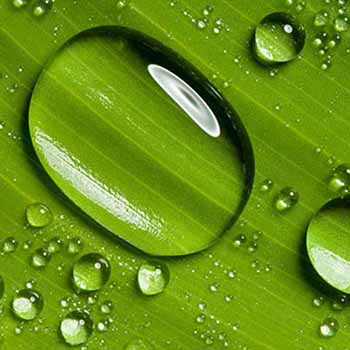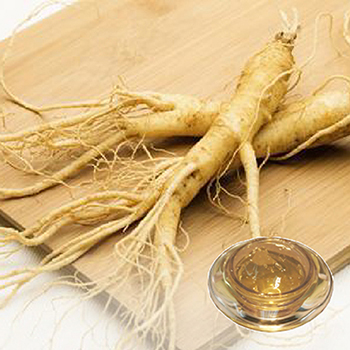目前購物車內沒有商品
SUMMARY
Yeast extract hydrolysate from Saccharomyces cerevisiae helps to prevent bacterial and fungal diseases in treated plants. It appears to act by enhancing the plant’s natural defense mechanisms. The active ingredient is approved for use on all food crops, as well as on turf and ornamental plants. Yeast extract is a common food flavoring and has a long history of use as a plant fertilizer. No risks to human health or the environment are expected from the pesticidal uses of yeast extract hydrolysate.
DESCRIPTION OF THE ACTIVE INGREDIENT
This active ingredient consists primarily of oxidized amino acids, but also includes nutrients such as vitamins, and minerals. Brewer’s (Baker’s) yeast extract, from which the active ingredient is derived, is cleared by the U.S. Food and Drug Administration (FDA) as a flavor enhancer for soups, fruits, and other foods. Because yeast extract is especially rich in B vitamins, it is also used as a human nutritional supplement. The single registered end use product, “KeyPlex 350," in use for more than 20 years as a plant fertilizer, was also found to be useful also in preventing crop diseases. Yeast extract hydrolysate from Saccharomyces cerevisiae may act by stimulating natural defense mechanisms in plants. The end product also improves growth, yield, and shelf life of crops.
USE SITES, PURPOSE, AND APPLICATION METHODS
Use Sites: All food crops; turf and ornamentals
Purpose: Helps prevent certain plant diseases, such as bacterial leaf spot disease of tomatoes, and post-bloom fruit drop and greasy spot diseases of citrus. Also increases crop yield and shelf life.
Application Apply by spraying foliage from the ground or air, or by fertigation (low volume
Method: irrigation), every two to three weeks.
Yeast extract is commercially available as either powders or pastes and has been extensively used as flavouring agent by the food industry. It is rich in nucleic acids, consisting of mainly ribonucleic acid (Nagodawithana, 1992). After autolysis and partial hydrolysis of RNA, ribonucleotides such as guanosine 5'-monophosphate (GMP) and inosine 5'-monophosphate (IMP) may be extracted from the biomass. These substances are efficient flavour enhancers at levels below detection thresholds (Schiffman, 1987). The chemical compounds responsible for flavour enhancement action in crude preparations were found to be predominantly due to monosodium glutamate (MSG), IMP, and GMP (Akiyama et al., 1975). These three flavour enhancers are well known in the food industry and are now commercially available worldwide. They accentuate meaty flavours in foods and have found applications in many savoury products. The world market of flavour enhancers surpasses billion per year (Révillion et al., 2000).
The preparation of yeast extract requires disruption of cell walls. However, among physical, chemical, and enzymatic methods for yeast breakage, autolysis is the only method that appears practical on industrial scale (Orban et al., 1994). Yeast autolysis occurs around a pH of 5.0 (Béhalová and Beran, 1979). However, during cell autolysis, intracellular RNA normally decomposes to low molecular weight non-flavourizing substances such as nucleosides or puric/pyrimidic bases. Indeed, when autolysis is carried out at pH lower than 6.0, the GMP formation is very low (Tanekawa et al., 1981). However, 50-80% of intracellular RNA remained intact when yeast autolysis was developed at a constant pH range of 6.2-6.4 at 30-60ºC for 10-30 h (Tanekawa et al., 1981). In this case, the remaining intracellular RNA could be easily hydrolysed to 5'-nucleotides by the action of phosphodiesterase preparations, obtained from malt roots or fungi, in a manner to obtain an extract rich in flavouring compounds such as GMP or IMP (Nagodawithana, 1992).
Yeast Extract for Friis Medium
Yeast (93.75 g) + Super Q Water (562.5 ml) per flask
Place in incubator at 37°C for 20 minutes.
Heat to 90-100°C for 5 minutes
Cool on ice.
Pour into centrifuge bottles and centrifuge at 2500 rpms for 30 minutes (4°C).
Filter supernatant through glass pads twice.
Measure into bottles and label.
Autoclave for 2-5 minutes at 115°C.
Freeze in 45 and 90 ml aliquots.
yeast per 750 ml water = 1 batch
Yield is approximately 700 ml.
Yeast extract preparation # 2
1. Combine 929 ml Super Q water and concentrated HCl in a 2 liter flask at room temperature.
2. Slowly stir in 227 g Fleishman's dry yeast for baking. Mix well.
3. Autoclave on liquid cycle three minutes.
4. Cool on ice.
5. Centrifuge at 8,000 rpm for 15 minutes. Save supernatants.
6. Bring supernatant to pH 7.8 - 8.0.
7. Filter supernatant through decreasing size filters
8. Filter sterilize through 0.22 µm filter bottle top filters. Alternatively, autoclave on liquid cycle for less fastidious species.
9. Test for ability to support mycoplasma growth.

Functional organization of the yeast proteome by systematic analysis of protein complexes.
Most cellular processes are carried out by multiprotein complexes. The identification and analysis of their components provides insight into how the ensemble of expressed proteins (proteome) is organized into functional units. We used tandem-affinity purification (TAP) and mass spectrometry in a large-scale approach to characterize multiprotein complexes in Saccharomyces cerevisiae. We processed 1,739 genes, including 1,143 human orthologues of relevance to human biology, and purified 589 protein assemblies. Bioinformatic analysis of these assemblies defined 232 distinct multiprotein complexes and proposed new cellular roles for 344 proteins, including 231 proteins with no previous functional annotation. Comparison of yeast and human complexes showed that conservation across species extends from single proteins to their molecular environment. Our analysis provides an outline of the eukaryotic proteome as a network of protein complexes at a level of organization beyond binary interactions. This higher-order map contains fundamental biological information and offers the context for a more reasoned and informed approach to drug discovery.

Yeast extract is a soluble concentrate extracted from yeast such as Saccharomyces species (Brewer's yeast, Baker's yeast) and Torula yeast, and is used widely as a flavor enhancer containing inosinic acid and guanylic acid. It is manufactured by autolysis with endogenous enzymes, or by enzymatic treatment using exogenous enzymes.
Flavor components are classified into a nucleic acid type, protein type, and trace component type. Main flavor components of a nucleic acid type are inosinic acid (IMP) and guanylic acid (GMP). Yeast extract is manufactured using exogenous enzymes in the following steps; (1) destruction of mainly cell walls with enzymes , TUNICASE FN) for extraction of RNA, (2) production of adenylic acid and guanylic acid by treatment with nuclease that degrades DNA and RNA, and (3) conversion of adenylic acid to tasty inosinic acid by treatment with deaminase .
The flavor components of a protein type are amino acids and peptides. They are produced by treatment with protease or peptidase . Improvement of flavor is attained by converting glutamine released from yeast proteins to glutamic acid by treatment with glutaminase.



